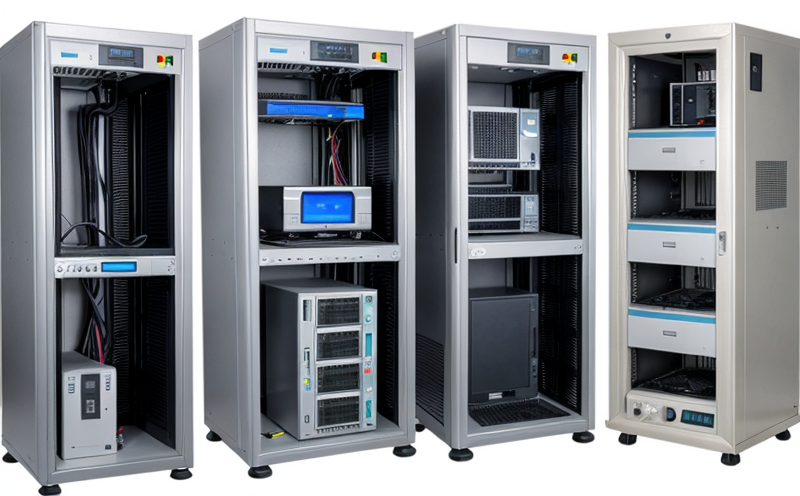CENELEC EN 55032 EMC Emission Testing for Telecom Equipment
The CENELEC EN 55032 standard is a crucial part of the European Union's approach to ensuring that electronic and electrical equipment does not interfere with other devices. This standard sets out limits on conducted and radiated emissions from telecom equipment operating in the frequency range of 150 kHz to 8 GHz.
The testing under this standard is essential for manufacturers who want to ensure their products comply with EU regulations and can be sold freely within the single market. The test assesses both conducted (emissions through cables) and radiated emissions, which are the unwanted electromagnetic waves that a device emits into its surroundings.
The CENELEC EN 55032 standard is particularly important for telecom equipment as it ensures that devices do not interfere with other radio services or cause harmful interference. Compliance with this standard demonstrates the manufacturer's commitment to quality and reliability, which is crucial in a highly competitive market.
Conducted emissions are measured using a 1 m (39 inches) test cable connected to a current clamp at the power supply of the device under test. Radiated emissions are typically measured in an anechoic chamber that minimizes reflections of electromagnetic waves. The limits for conducted and radiated emissions are specified in the standard, which vary depending on the frequency range.
Failure to meet these standards can result in product recalls, fines, or even legal action. It is therefore critical for manufacturers to ensure compliance early in the development process. This testing service ensures that telecom equipment meets these stringent requirements, thereby minimizing risks and ensuring a smooth market entry.
Why It Matters
The CENELEC EN 55032 standard is not just about compliance—it's about protecting the integrity of the telecommunications ecosystem. In today’s interconnected world, where devices are increasingly dependent on each other for functionality and performance, electromagnetic interference (EMI) can lead to serious issues.
For telecom equipment manufacturers, ensuring that their products meet these stringent emission limits is a matter of reputation and market access. A single non-compliant product could cause widespread disruption in networks, leading to customer dissatisfaction and potential legal challenges.
The standard also plays a role in public safety by preventing interference with critical communication systems such as emergency services. Ensuring that telecom equipment complies with CENELEC EN 55032 is thus not just about meeting regulatory requirements but also about contributing to the overall reliability and security of telecommunications infrastructure.
Moreover, compliance with this standard can open doors to international markets where similar standards are enforced. This is especially important for telecom equipment manufacturers who aim to expand their reach beyond Europe into other regions that adopt CENELEC standards.
Industry Applications
| Application | Description |
|---|---|
| Mobile Base Stations | The testing ensures that base stations do not interfere with other radio services and prevent harmful interference. |
| Wireless Routers & Modems | Testing these devices helps ensure they operate without causing undue interference in the home or office environment. |
| Telecommunications Switches | Compliance ensures that switches function reliably and do not disrupt network operations due to EMI issues. |
| Wireless Headsets & Speakers | The test guarantees these devices operate without causing interference with other wireless systems in the vicinity. |
- Ensures reliable operation of telecom equipment across diverse environments.
- Avoids costly product recalls and legal disputes due to non-compliance.
- Facilitates seamless integration into existing telecommunications networks without causing interference.
- Enhances public safety by minimizing risk to critical communication systems.
Why Choose This Test
Selecting a reputable laboratory for CENELEC EN 55032 EMC emission testing is vital for several reasons. First, it ensures that the testing process adheres to international standards and best practices, providing accurate and reliable results.
Secondly, experienced technicians can provide valuable insights into potential issues before they become major problems. This proactive approach helps manufacturers identify areas of improvement early in the development process, saving time and resources in the long run.
The right laboratory will also offer comprehensive aftercare support, including detailed reports that are essential for documentation purposes. These reports can be used to demonstrate compliance with regulatory requirements and build trust with customers and partners.
Moreover, a trusted partner ensures consistent quality across multiple tests, which is critical for maintaining brand reputation and market positioning. By choosing the right laboratory, manufacturers can focus on innovation without having to worry about meeting complex testing standards.





